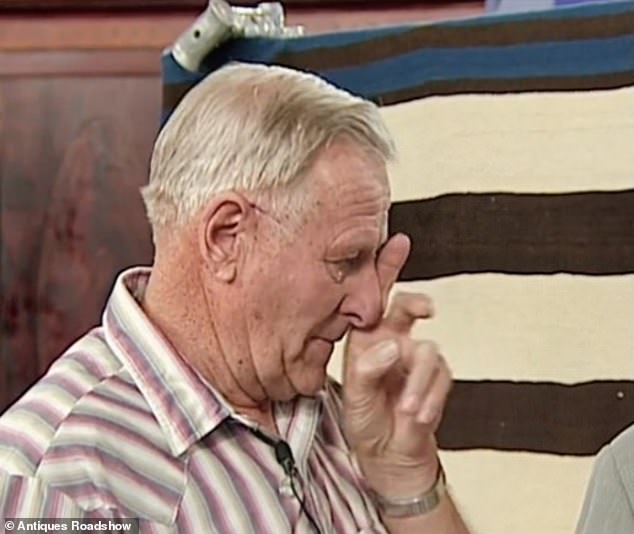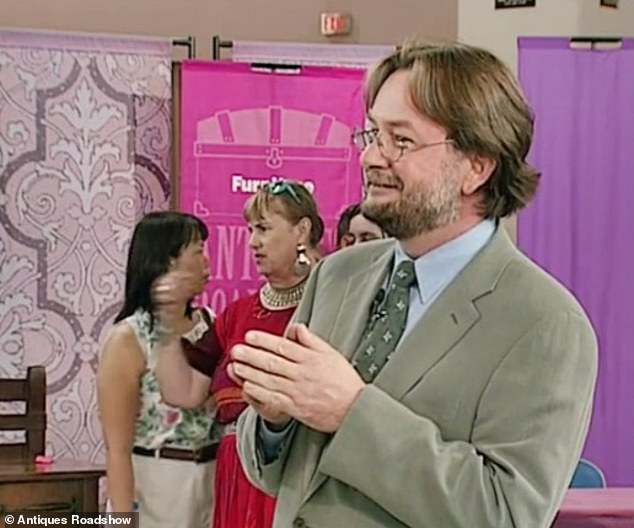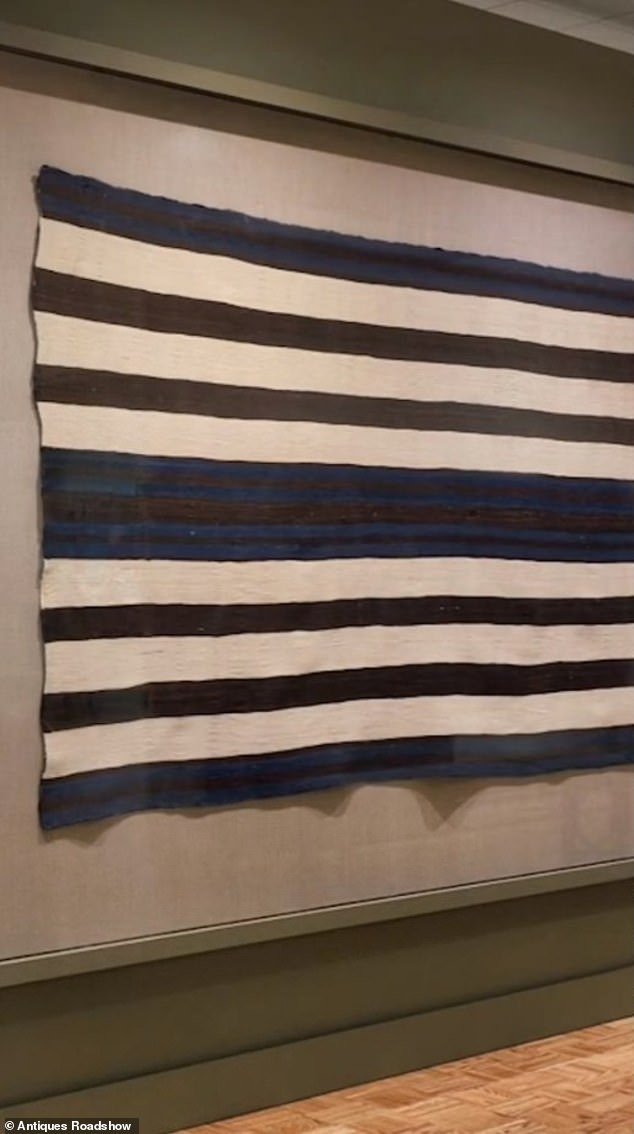Elderly man breaks down in tears on Antiques Roadshow after learning astonishing value of his treasured childhood blanket
An elderly man breaks down in tears after learning the high price of his child’s blanket.
In a resurfaced clip from Antiques Roadshow, Ted Kuntz showed appraiser Donald Ellis a blanket that he said was “over the back of a chair” in his home.
Kuntz said the blanket was given to his grandmother’s foster father in the late 1800s by Kit Carson, a famous United States frontiersman.
When Kuntz lived with his grandmother, he said the blanket was on the bed where he slept and kept him warm during the cold winter months.
“Did you notice that when you showed me this, I stopped breathing a little?” Ellis said to Kuntz. “Do you have any idea what you’re looking at here?”
An elderly man breaks down in tears after learning the high price of his child’s blanket

In a resurfaced clip from Antiques Roadshow, Ted Kuntz showed appraiser Donald Ellis a blanket that he said was “over the back of a chair” in his home
Knowing that Kuntz was unaware of the blanket’s true value, Ellis asked him, “Are you a rich man, Ted?” because he knew his life would change forever.
The blanket Kuntz brought in was actually a rare Navajo Ute First Phase chef’s blanket, one of the first types of chef’s blankets made between 1840 and 1860.
“This is Navajo weaving in its purest form,” Ellis said, noting the incredible condition of the blanket. “It’s the most important thing I’ve seen on the Roadshow.”
“On a really bad day, these textiles would be worth $350,000. On a good day it’s about half a million dollars,” Ellis said as Kuntz’s eyes filled with tears.
The item’s value, the appraiser explained, did not take into account the item’s provenance as a gift from Kit Carson, which could not be confirmed at the time.
Unfortunately, there is a bleak history associated with the infamous frontiersman.

Ellis said the blanket Kuntz brought was actually a rare Navajo Ute First Phase chef’s blanket, one of the first types of chef’s blankets made between 1840 and 1860.
In 1864, under military orders, Kit Carson led the forced relocation of Navajo communities from their ancestral lands in present-day Arizona to a much smaller reservation.
When the Navajo resisted, Carson’s tactics included a scorched earth campaign designed to starve them into submission.
This brutal episode, known as the Long Walk of the Navajo, resulted in the deaths of thousands of people – a devastating loss of life that is now considered an act of ethnic cleansing.
Despite this horrifying truth, the blanket would be worth 20% more if there was a confirmed connection to Carson.

The blanket was eventually sold for $450,000 to an anonymous buyer, years after Kuntz appeared on Roadshow. The blanket was then donated to the Detroit Institute of Arts (photo: the Navajo blanket displays at the Detroit Institute of Arts)
Kuntz said he immediately contacted Ellis to see if he would be interested in helping him sell the blanket. Ellis offered him $300,000 with the idea that they would split whatever he could sell it for.
However, this offer was made before the September 11 terrorist attacks, and Ellis was locked in for a $300,000 investment, with no sale in sight to complete the second part of the deal.
In a later episode, it was revealed that the blanket had been sold to an anonymous buyer for $450,000 years after Kuntz appeared on Roadshow. The blanket was then donated to the Detroit Institute of Arts and Kuntz used his windfall to pay off the mortgage on his house.
“I knew we couldn’t afford to keep it, and that it would be better to have it in a place where it could be properly preserved,” he said.
